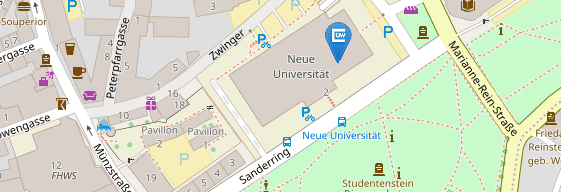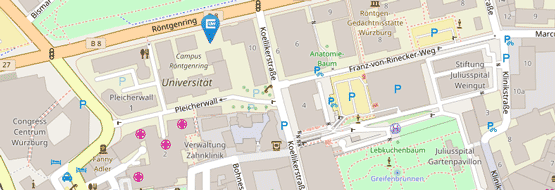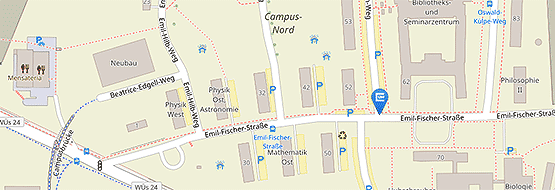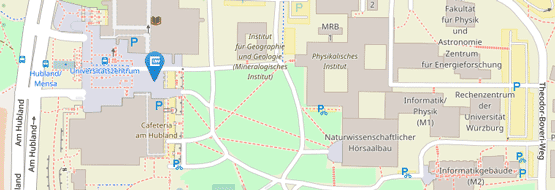Mobile Research: Insta-walks and Cook-alongs
09/09/2025Research on the move: The social and cultural sciences are increasingly relying on mobile methods to collect data. A new book deals with these. Co-editor is the Würzburg human geographer Matthias Naumann.
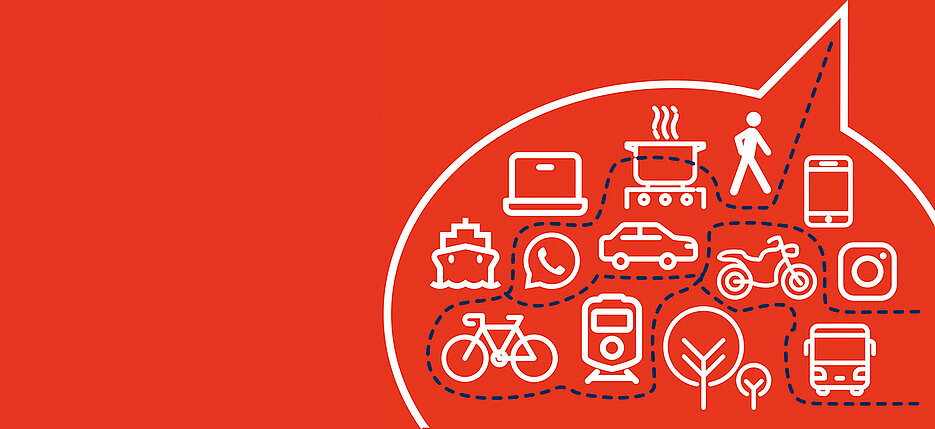
The cultural and social sciences are on the move. They use digital applications, increasingly involve citizens and are becoming more mobile. Whether on foot, by bike, in a car or by boat, researchers are setting off to accompany people, things and data.
Walking interviews, cook and eat-alongs or Instagram walks: these are just three examples of the variety of mobile methods. Students and researchers who want to find out more about them will find what they are looking for in the new "Handbuch Mobile Methoden in der Sozial- und Raumforschung" (in German only).
Professor Matthias Naumann, Chair of Human Geography at the University of Würzburg, has edited the book together with Anke Strüver, Professor of Human Geography at the University of Graz (Austria).
The 320-page volume has just been published. In addition to an introduction by the editors, it contains 22 articles that offer many insights into the practice of mobile data collection and analysis. The limitations of these methods and the need to reflect on them and develop them further are also addressed.
Example: Drive-throughs in Lusatia
Where there is no railway line and the bus only runs rarely or not at all, people are dependent on their cars. JMU professor Matthias Naumann uses the example of the Lusatian lignite mining region to describe how such rural areas can be explored in drive-throughs by car and how the mobility experiences of the population can be understood. He wrote the article with Tamara Schaal-Lagodzinski from the Federal Institute for Research on Building, Urban Affairs and Spatial Development in Cottbus.
The end of lignite mining has been decided in Lusatia and the region is in the midst of a major structural change. In order to gain an insight into local developments, the two researchers used economic, infrastructural and demographic data to identify two particularly structurally weak municipalities in the districts of Elbe-Elster and Görlitz - with up to 18 districts, some of which are relatively far apart. They visited these places by car, collected data, for example on vacancies or the need to renovate houses, and spontaneously engaged in dialogue with the local population.
Drive-throughs can therefore be a first exploratory step and provide indications for further analyses - which then ask about the reasons for the very different investment activity in the small-scale rural communities visited. However, this form of mobile research is also explicitly about being able to better understand the everyday lives of local people.
Publication
Matthias Naumann and Anke Strüver (eds.): Handbuch Mobile Methoden in der Sozial- und Raumforschung, transcript Verlag Bielefeld 2025, 320 pages, 39 euros. DOI: 10.36198/9783838565132, in German language
Contact
Prof. Dr Matthias Naumann, Chair of Human Geography, University of Würzburg, matthias.naumann@uni-wuerzburg.de


